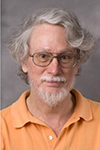Towards updated stratigraphic frameworks for Australia’s offshore hydrocarbon provinces
Tegan Smith A , James Ogg B , Andrew Kelman A , Steve Abbott A and Thomas Bernecker AA Geoscience Australia
B Purdue University
The APPEA Journal 55(1) 105-112 https://doi.org/10.1071/AJ14008
Published: 2015
Abstract
A standardised and precise timescale is invaluable to geological research and crucial to meaningful correlation at local, regional and global scales for both researchers and industry. Modern techniques and instruments are delivering increasingly accurate ages, and biozonation schemes are continually refined and standardised on a global basis. Updates to the international geologic time scale occur regularly, and constant updates to stratigraphic schemes are required to ensure that major regional geological events can be correlated across the Australian margin.
Several different sequence stratigraphic schemes have been developed for the basins of the North West Shelf. These range from basin-specific to margin-wide schemes. While these schemes have much in common, there are some significant differences. Understanding the nature and reasons for both the differences and commonalities is an essential step for improving understanding of the region’s evolution. The continuing improvements being made to biostratigraphic zonation schemes for the Triassic to Cenozoic will assist in better defining sequences and correlations, and allow geologists to better understand whether apparent differences in sequence definition across the margin are real, and therefore if they reflect different basin histories or are simply an artefact of biostratigraphic imprecision.
Geoscience Australia endeavours to—in collaboration with industry—produce unified stratigraphic schemes for the various hydrocarbon provinces. This work will fundamentally support present and future acreage releases.

Tegan E. Smith is a stratigrapher in the Resources Division at Geoscience Australia. She completed a BSc at the University of Tasmania with a double major in Earth science and zoology, then joined the Australian National University (ANU) for her honours year. In 2007 Tegan undertook a PhD at ANU, then joined Geoscience Australia in 2011. She joined the Basin Resources Group as a biostratigrapher in early 2012, and moved to her present role in the Resources Advice and Promotion Branch in 2014. Tegan is a member of PESA and Australian Science Communicators (ASC). She is presently branch secretary of PESA-ACT. |

James (Jim) Ogg is a professor in Earth and Atmospheric Sciences at Purdue University in Indiana, US, with research specialties ranging from Mesozoic ocean history and climate cycles to stratigraphic databases. Since completing his PhD at Scripps Institution of Oceanography, California (1981), he has served on 10 Deep Sea Drilling Project (DSDP) and Ocean Drilling Program (ODP) legs as a palaeomagnetist, sedimentologist or logging scientist. He was Secretary General of the International Commission on Stratigraphy (ICS; 2000–08) and coordinated the ICS stratigraphy information service (2008–12). Jim was co-editor of A Geologic Time Scale 2004, lead author for the Concise Geologic Time Scale (2008), and co-editor of The Geologic Time Scale 2012. His collaboration with Geoscience Australia on timescale databases and visualisation software began in 2007 during a sabbatical in Canberra, followed with another sabbatical in 2014. |

Andrew P. Kelman is a biostratigrapher with the Resources Advice and Promotion Branch in the Resources Division at Geoscience Australia. He completed a BSc at ANU in 1993, and an honours degree in paleontology and ecostratigraphy at Macquarie University, NSW, in 2005. He joined Geoscience Australia as a Palaeontology Technician in 1994, moving to his present position with the Timescales project in 2006. Andrew’s work is now focused on biostratigraphic contributions to the acreage release process and compiling biostratigraphic charts covering the Australian offshore and onshore basins. |

Steve Abbott earned his qualifications in sedimentary geology from Flinders (hons, 1987) and James Cook universities (PhD, 1994). He joined the Energy Systems Group at Geoscience Australia in 2013, where he works on a regional sequence stratigraphic study of the Browse Basin (North West Shelf). Steve’s past roles include mineral exploration (mainly for sedimentary uranium in central Australia), teaching and research (at Southern Cross University, James Cook University, and the University of Tasmania), and regional mapping (with the Northern Territory Geological Survey). Steve is Vice-president of PESA-ACT. |

Thomas (Tom) Bernecker is a sedimentologist/petroleum geologist who holds a Master of Science degree from the University of Aachen, Germany, and a PhD from Melbourne’s La Trobe University. He has worked on various coal- and hydrocarbon-bearing basins in Europe, and later in Australia where his initial focus was the petroleum geology and the hydrocarbon prospectivity of the Gippsland and Otway basins. Tom joined Geoscience Australia in 2007 where he now manages the Offshore Petroleum Acreage Release and Promotion project. Member: PESA, SEPM and SEAPEX. |


